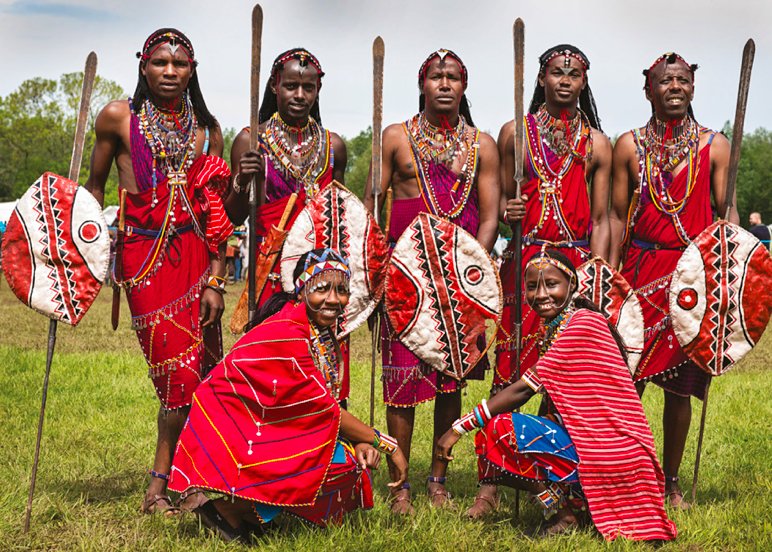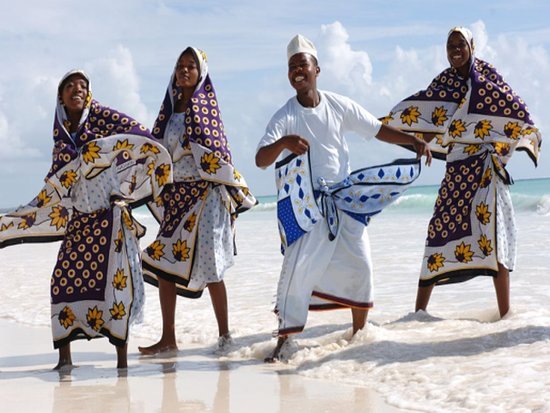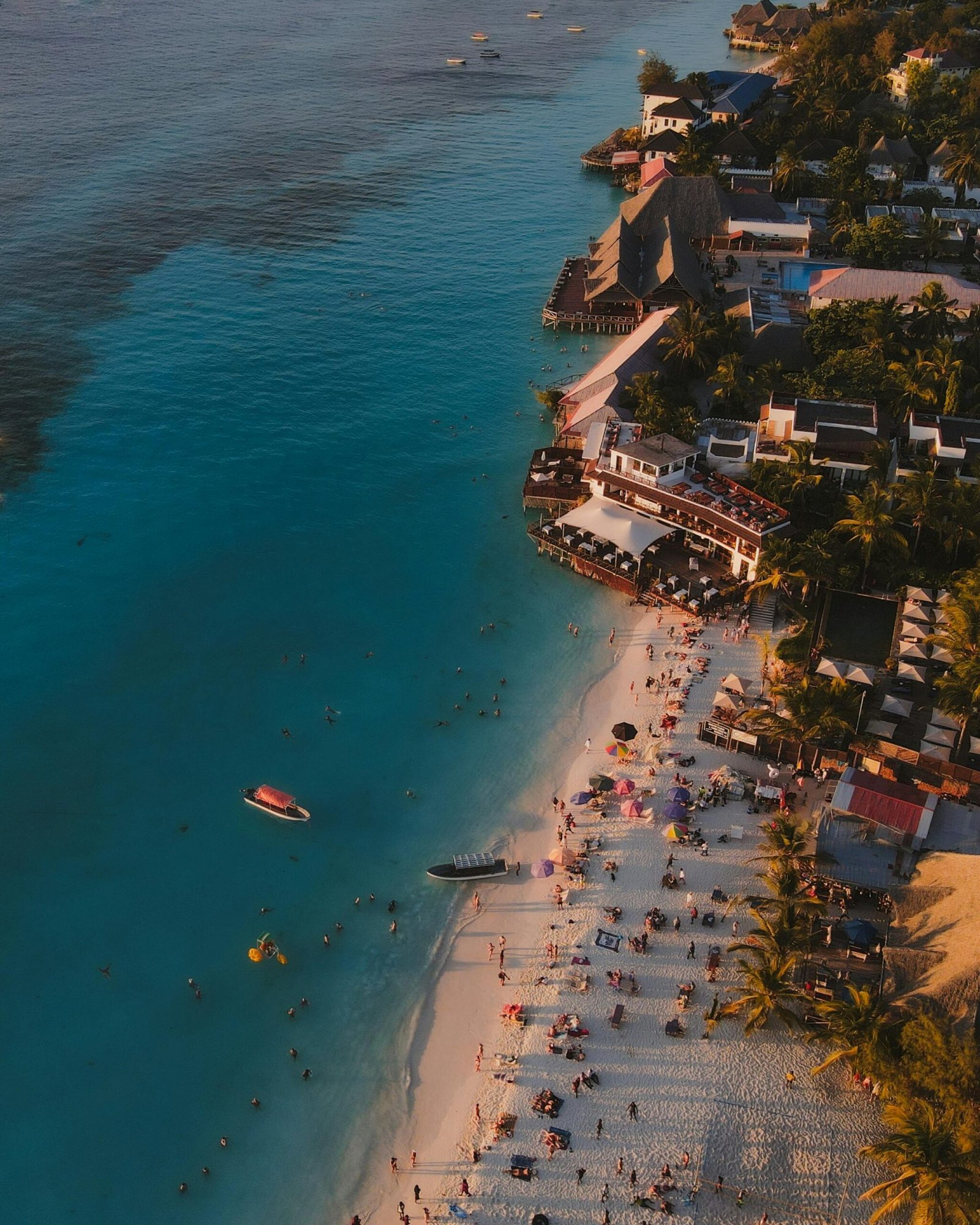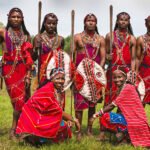
Tanzania is a land where culture and color come to life—not just in its landscapes and languages, but in its clothing. With over 120 ethnic groups and deep historical influences from Africa, Arabia, and the Indian Ocean trade, the way Tanzanians dress is more than just a matter of style. It’s a vibrant, living expression of tradition, identity, and community.
Whether you’re a curious traveler or planning a trip to this beautiful country, understanding Tanzanian clothing gives you insight into the nation’s soul.
In Tanzania, clothing is more than fashion—it’s a living canvas of culture, identity, and tradition woven into every thread.
Island Glow Adventure
Traditional Tanzanian Clothing: Woven in Heritage
The Kitenge and Kanga: Culture in Color
Two of the most iconic fabrics in Tanzania are the kitenge and the kanga. These brightly colored cotton garments are worn by women across the country. While the kitenge is typically tailored into dresses, skirts, and blouses for formal occasions, the kanga is a versatile wrap worn daily—used as a skirt, headscarf, or baby carrier.
The kanga is particularly unique because it often features Swahili proverbs printed on the fabric, offering messages of love, wisdom, or political sentiment. Wearing a kanga is not just about fashion—it’s about storytelling.
Men’s Traditional Attire
Tanzanian men wear the kanzu, a long white robe considered formal attire, especially for weddings, religious ceremonies, and national events. On the coast, particularly in Zanzibar, the kanzu is often paired with a kofia, an embroidered cap with Islamic and Swahili roots.
Among the Maasai, a prominent ethnic group in northern Tanzania, men traditionally wear the shúkà, a striking red or blue-checkered cloth draped over the body. This minimalist yet symbolic attire is often paired with handmade beadwork and sandals made from recycled rubber.
Ceremonial and Cultural Significance
Clothing plays a crucial role in Tanzanian ceremonies and milestones:
- At weddings, women wear colorful, tailored kitenges, while men dress in kanzus or suits with kitenge accents.
- During religious holidays, both Muslim and Christian communities wear modest, elegant attire that reflects their beliefs.
- At funerals, darker, subdued garments are worn out of respect, often with less elaborate designs.
Clothing choices often communicate social roles, marital status, or even emotional messages, making garments in Tanzania far more than just decorative.
Modern Fashion: Where Tradition Meets Trend
In urban centers like Dar es Salaam, Arusha, and Dodoma, a new generation of designers is blending traditional textiles with contemporary style. Afro-fusion fashion is booming, with tailored jackets, modern cuts, and accessories all made from kitenge or batik fabrics. Many young Tanzanians now proudly wear traditional prints in everyday life, not just on special occasions.
Fashion influencers and local brands are leading the movement toward “wearing culture with pride,” sparking creativity and economic growth through fashion.

What to Wear as a Visitor to Tanzania
If you’re planning a visit, your clothing should reflect Tanzania’s warm climate, cultural norms, and your planned activities. Here are some quick tips:
General Travel Tips:
- Lightweight cotton or linen is ideal for the tropical climate.
- In towns and villages, modest clothing (covering shoulders and knees) is highly recommended.
- A kitenge wrap or scarf is great to carry around for spontaneous visits to religious or traditional places.
On Safari:
- Choose neutral tones like khaki, olive, or beige.
- Avoid bright colors and dark blue (which attracts tsetse flies).
- Bring layers for chilly early morning game drives.
On Zanzibar’s Coast:
- Swimwear is fine on the beach, but cover up when in towns.
- Women are advised to bring a sarong or beach cover-up.
- Men should wear shirts in public areas, even at beach restaurants.
Respecting Religious and Regional Dress Codes
In Zanzibar and other coastal Muslim-majority regions, clothing customs are more conservative. Visitors are encouraged to dress respectfully by avoiding short shorts, tank tops, and overly revealing clothes when not on the beach.
Respecting local dress norms shows cultural sensitivity and enhances your experience with the locals, many of whom deeply value modesty and tradition.
Sustainable and Ethical Fashion in Tanzania
Tanzania is also embracing eco-conscious fashion. Local tailors and designers are creating garments from sustainable cotton, upcycled fabrics, and even plant-based dyes. By purchasing locally made clothing or accessories, visitors can support small businesses and artisans, contributing to ethical tourism and cultural preservation.
Markets like Dar es Salaam’s Kariakoo, Arusha’s Maasai Market, or local craft fairs in Stone Town are perfect places to find handmade, ethically produced items.
Final Thoughts
Tanzanian clothing is not simply about covering the body—it’s about honoring heritage, expressing identity, and celebrating beauty. From the bold prints of the kitenge to the flowing lines of the kanzu and the enduring strength of the Maasai shúkà, each garment carries meaning. As fashion continues to evolve in Tanzania, it remains deeply rooted in the values of respect, community, and creativity.
Whether you’re dressing for adventure, respect, or celebration, Tanzanian clothing welcomes you into a story that has been woven for generations.








